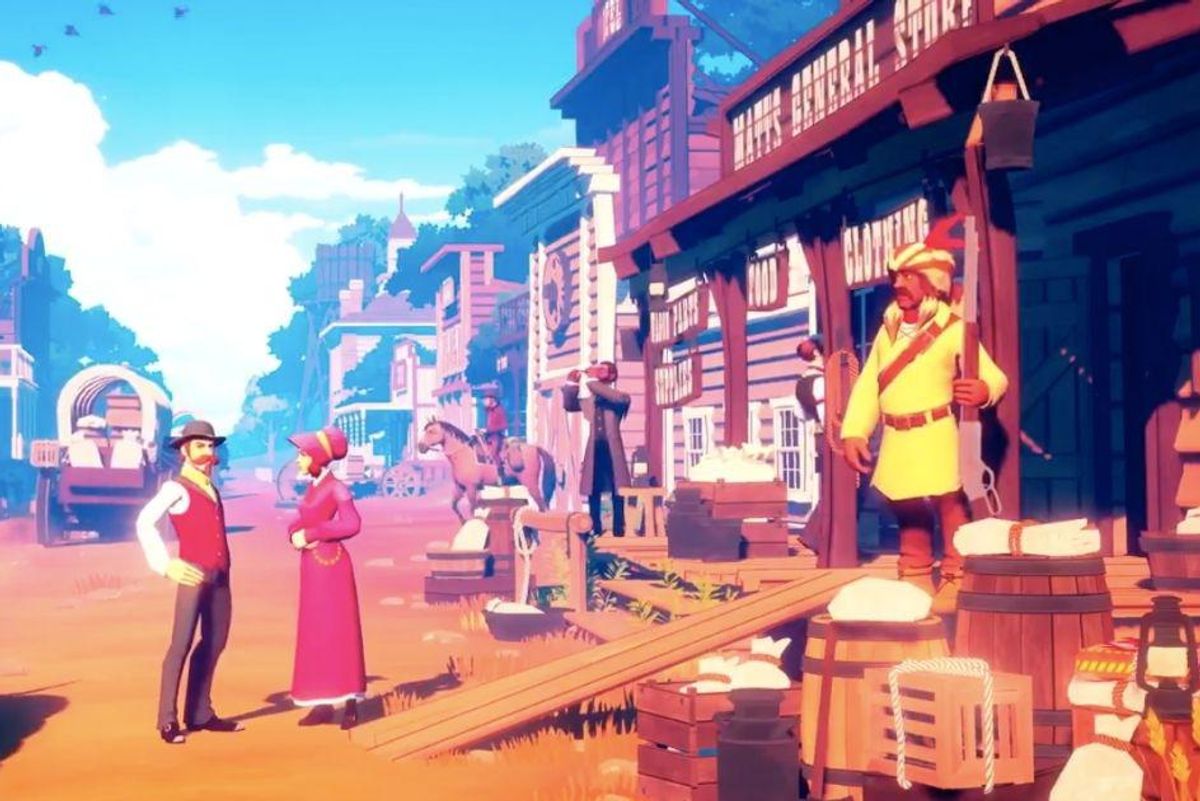The Oregon Trail game got a revamp with more authentic Native American representation

Anyone who came of age during the late 80's and early 90s is at least somewhat familiar with The Oregon Trail game. As one of the most popular computer-based video games of all time, it's a well-loved classic for late Gen Xers and early Millennials.
The game was designed to be educational, to teach kids about the Lewis & Clark expedition and westward expansion of the United States in the mid-1800s. Players were part of a wagon train traveling out west, encountering various challenges and pitfalls along the way, including the dreaded dysentery that led to countless players' demise.
Kids loved it. But unfortunately, not all of its lessons were accurate. In fact, the representation of Native Americans in the game perpetuated common stereotypes and myths about the Indigenous people of the time. Even one of the co-creators of the original game has said in recent years that it should have included a Native perspective.
Now, a new version of the game has been released through Apple Arcade. Developers at the company Gameloft are targeting the newest installment at the same generation who played it as kids, but in the new version, they took conscious steps to make sure their representations of Native Americans in the game were more authentic.
Have you made it to Independence, Missouri in @OregonTrail ? @AppleArcade \nDownload Now https://gmlft.co/OregonTrail-2021\u00a0\u2026pic.twitter.com/jAgh0MNCX3— Gameloft (@Gameloft) 1620745202
In this version, for the first time in the game's history, Native American characters are playable. And to make sure the characters are portrayed accurately, developers hired three Indigenous historians to weigh in on the game design and suggest improvements.
First, the historian listened to early test music for the game and said the flutes and drums were overkill. They also nixed the use of broken English.
The game's creative director Jarrad Trudgen took their advice—and the reasoning behind it—to heart. "It's like a trope to make Native American people seem primitive somehow," he told NPR, "when actually there were a lot of bilingual or polylingual Native Americans at that time."
The historians weighed in names and imagery of Native characters as well.
As a University of Nebraska historian with Lac Courte Oreilles ancestry, Margaret Huettl had access to old photos and drawings, which she researched to get a more accurate picture of what different tribes' clothign and style would have been. "Initially, all of the Native people [in the revamped game] had braids," Huettl told NPR. "And I think we suggested, maybe they don't all have to have braids."
She said she is glad the developers listened to her and the other Indigenous scholars as they suggested appropriate names for characters, as well as roles they could play beyond trappers or guides.
One of the most significant changes was the elimination of the bow and arrow—something that Trudgen initially wanted to keep. But when Huettl explained that Native Americans at that time were much more likely to have a rifle, and that bows and arrows were more of a stereotype, he and the game developers understood.
"That wasn't our intention at all, obviously," Trudgen said. "We were just coming to it sort of as a naive 'bow and arrows are cool' angle."
That's exactly the sort of oblivious misstep consulting with the historians was designed to help them avoid, so the bows and arrows went.
According to Game Rant, the new version of The Oregon Trail includes a disclaimer from the developer, explaining its intent to properly represent Native American perspectives in this installment. It also points out the truth—that the Westward expansion the game is based around was not a positive experience for Native Americans. It was brutal colonization that still has repercussions today.
While it's not possible to encapsulate the full scope of history in a video game, adding authentic Indigenous representation to one of the most popular educational games of all time is a vital step in the right direction. Kudos to Gameloft for taking the time and consulting with the people who can make sure it's done right.
- A photographer captured a track star's powerful MMIW statement ... ›
- Canada has acknowledged its genocide of Indigenous women ... ›
- Disney signed a contract with Indigenous leaders to portray culture ... ›
- Montana's Blackfeet Tribe has gifted hundreds of COVID vaccines to its Canadian neighbors - Upworthy ›
- Yurok Tribe becomes first to co-manage National Parks land - Upworthy ›

